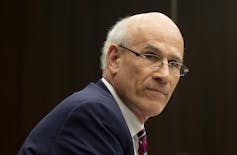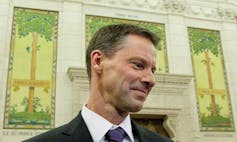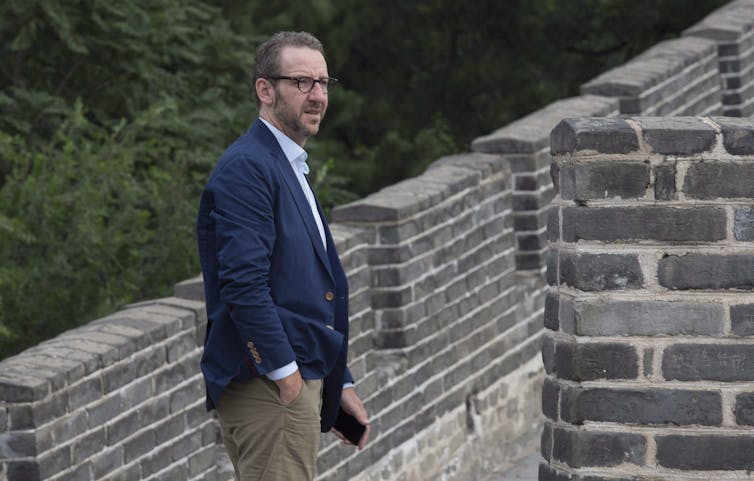By Jonathan Malloy
Politics is cyclical; what goes around usually comes around again, as politicians and institutions follow long-term patterns of behaviour.
But the still-developing SNC-Lavalin story and resignation of Jody Wilson-Raybould from cabinet is bewildering and does not fit traditional patterns of Canadian politics.
Three things stand out: The complex nature of the “scandal,” the puzzling resignation of Gerald Butts and the actions of Wilson-Raybould.
First is the nature of the “scandal.” A typical political scandal involves a person who did something wrong out of negligence or motivations of money, personal ambition, sex, etc.
But this is a much more complicated and abstract affair. No one is suggesting Prime Minister Justin Trudeau, his principal secretary Butts or anyone else in the Liberal Party did anything to line their own pockets, unlike the sponsorship scandal in the early 2000s in which the PMO turned a blind eye as many Liberals benefited handsomely.
Instead, Trudeau and Butts saw political advantage for the government to lighten up on SNC-Lavalin. There are political and economic interests that still clearly carry some weight in Québec.
In public affairs, what is legally wrong is not necessarily unacceptable politically, and vice versa. (For example, despite his outrageous spending practices, Sen. Mike Duffy was acquitted in 2016 of actually breaking the law.)
Alleged pressure
From a legal viewpoint, the issue here is the alleged undue pressure on the attorney-general — which, politically, is an internal matter no different from any other time the PMO throws its weight around. Indeed, this is how Privy Council Clerk Michael Wernick recently characterized the entire matter.

From a political viewpoint, the more serious matter is the apparent demotion of Wilson-Raybould for not doing what the prime minister asked her to do, which, incidentally, is completely legal from a constitutional viewpoint. The economic dimension and the importance of SNC-Lavalin to Québec complicates matters even further, making this a unique multidimensional “scandal.”
The narrative is complicated and it’s not clear the story has caught fire with the general population. For example, one poll found that while 41 per cent of Canadians felt Trudeau had done something wrong in the affair, another 41 per cent said they weren’t sure.
Given the above muddled narrative, conventional wisdom suggested that the story might just drag out and diminish over time. But then came the bombshell resignation of Butts, which really defies past practice.

While other PMO staff have also had great power, they have ultimately been hired help; none have claimed such a deep personal friendship with the prime minister (Brian Mulroney hired many friends, but they generally did not rise to or stay at the top tier).
Nor have any of them played such a public role, like Butts’ independent activity on Twitter. In contrast, Harper’s four chiefs of staff avoided publicity so much that the media was forced to constantly run the same grainy photos of them over and over again.
Political triple play
It’s this triple play of power, friendship ties and public profile that made Butts so exceptional, and thus made it so startling to see him become the first to go in what had seemed a serious but not catastrophic matter.
As the Liberal Party learned to its sorrow after calling the Gomery inquiry into the sponsorship controversy, scandals are best smothered through equivocation and greyness rather than fanning the flames with dramatic action.

Butts’ resignation was pretty much the most dramatic action possible and fits no pattern, provoking expectations that there is another shoe waiting to drop.
Finally, Wilson-Raybould’s actions do not fit the pattern of a ministerial resignation. When a minister resigns, they usually either disappear from view to sulk or do everything they can to own the story at the expense of the sitting government — in extreme cases setting up a virtual government-in-exile, like John Turner in relation to Pierre Trudeau or Paul Martin and Jean Chrétien.
Wilson-Raybould has done neither. While complicated by solicitor-client confidentiality (and we do not know who the anonymous sources are that have fed the story to the media), Wilson-Raybould has not adopted the usual techniques of non-stop interviews and op-eds to tell her side of the story, or even a non-story of: “There is so much I wish I could tell you but I can’t say anything.”
Wilson-Raybould’s strategy unclear
Instead, Wilson-Raybould has generally taken the high road. It’s hard to think of another ex-minister asking to come back and speak to the cabinet she just left or appearing in Parliament and then, quite reasonably, abstaining on a vote about herself.
Her intentions and strategy — if there is one — are unclear. It is worth noting that Canada’s first Indigenous woman attorney general and justice minister is doing politics differently and not following the well-worn playbook of dozens of male ex-ministers whose actions have been highly predictable and easily explained by sheer ego and pride.
The SNC-Lavalin story is still developing.
As more information and new developments emerge, we may be able to better fit it into typical patterns of Canadian political history. But for the moment, the SNC-Lavalin affair stands on its own as a complex, multi-dimensional story and not a typical political “scandal.”
The motivations of the key players remain unclear, and its long-term implications, especially for the coming election, are unknown.
This article is republished from The Conversation under a Creative Commons license. Carleton University is a member of this unique digital journalism platform that launched in June 2017 to boost visibility of Canada’s academic faculty and researchers. Interested in writing a piece? Please contact Steven Reid or sign up to become an author.
All photos provided by The Conversation from various sources.
![]()
Sunday, February 24, 2019 in The Conversation
Share: Twitter, Facebook



